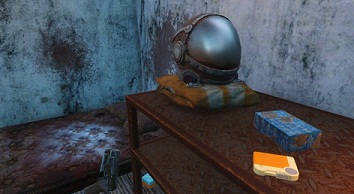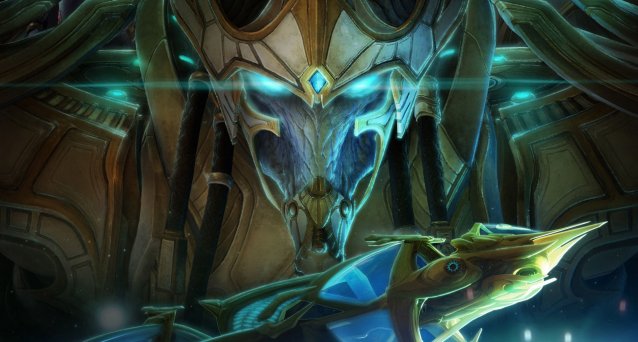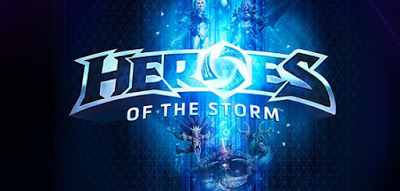

You’d think after nearly two decades ol’ Lara would finally be sat with her feet up at the inevitable Gaming Mascot Retirement home, her archaeological heyday now a distant, nostalgia-filled memory. Nope. Not Miss Croft. After four long years 2010’s Lara Croft and the Guardian of Light has finally bagged itself a sequel, and boy is it going to ruin your schedule.
Lara Croft and the Temple of Osiris doesn’t do things on a small scale. It barely knows the meaning of the word. This time around, everything is bigger. The environmental puzzles that fill each of its tombs are grander and more intricate than ever. The number of buff-happy amulets and rings has gone through the roof. Even the number of possible co-op players has shot up from two to four with Lara joined by fellow treasure pilferer Carter Bell and the disgruntled Egyptian gods Isis and Horus. That final number makes a huge difference, not only to the chaos that comes from having four people running around a map causing all hell but to the way you’ll all need to work together to solve the fiendish puzzles ahead of you.
Think of Temple of Osiris as a twin-stick shooter that got drunk, read a manual on platforming and dungeon crawling and thought, ‘Hey, I can do that’. That’s not to say its myriad parts are slapdash, more that Crystal Dynamics has been wise enough to stick to the formula that made Guardian of Light so rewarding while upping the ante in the right places. The twin-stick shooting smacks of isometric shooters such as Dead Nation with a tasty armoury of shotguns and grenade launchers (as well as the returning and über-satisfying remote bombs), but these skirmishes never feel like they’re overpowering the real stars of the show: those ah-so-moreish environmental puzzles.
Whether its using pressure pads on a trap-ridden floor to raise platforms for your partner or rotating cogs to align glowing portals that need blasting, these puzzles scale up in complexity the more players are added to the mix. On your own, these tasks become a button-holding balancing act as you use Isis’ staff to elevate enchanted platforms, leap across gaps and fight enemies all on the same pad. The puzzles are still fun and entertaining in single-player, but just like the last game, you can feel you’re almost cheating by resigning the solution to one player.
The Challenge Tombs from the first game make a welcome return and provide even more opportunities to gather up that tasty loot. You’ll find these mini-tombs scattered all across Duat, which each lil’ romp based around a single, fiendish puzzle. These get noticeably tougher as you progress through the story (while scaling in complexity depending on the number of players in your party), but the same goes for the treasures waiting for you. These pickups boost your health, your ammo capacity for secondary weapons or the amount of archaeological damage you can dish out so their definitely worth a visit.
Fire the game up with a party and everything changes. Suddenly the danger of failing a multi-faceted conundrum goes through the roof as you know that one small mistake on your (or anyone else’s) part will force everyone back to square one. There’s even a cute little shield bubble thrown into the melting pot that also works as a rudimentary platform to help your buddies reach higher ledges that simply doesn’t exist in solo play.
Yes, tombs are back! Actual tombs! Each one is filled to the brim with tricky platform sequences, those lovely physics-based puzzles and plenty of undead baddies to keep you occupied. Enemies – be they giants that explode when struck too often or archers that loose homing arrows – also increase in numbers to match the player count, but this can easily force a level to become overrun with a little /too/ much carnage as non-puzzle areas don’t scale up with them.
Even the loot element – a vital part of dungeon crawlers in the Diablo mould – is kept nice and simple with collectible gems for spending on amulet/ring-filled chests. Amulets provide buffs for the whole time, while rings only affect the player that claims them. Rings have both positive and negative effects this time around, adding another layer of strategy when considering the enemies you’re likely to encounter.
The addition of a central ‘open-world’ also adds another welcome layer of content with extra collectables, traps and plenty of Challenge Tombs. The previous game was crying out for a similar setup so its comforting to see Crystal Dynamics tying the different themes of its tombs together with in a way that promotes exploration on your terms.
Ironically, Temple of Osiris’ biggest selling point – namely its over-the-top four-player action – is also its Achilles heel... at times. Each player is colour-coded to help them stand out on-screen (an effect that extends to the blast radius of bombs as well), but four-players leaping about dropping bombs amid an enemy throwdown is nigh on impossible to keep track of. Something made all the more frustrating by an occasional lack of space when battling in smaller areas with a higher player count. When playing with more than one player certain parts of a tomb won’t increase in size, but the number of enemies will – thankfully this doesn’t happen that often thanks to the fast pace of each tomb.
Alongside those puzzle-happy tombs, Temple of Osiris rounds off each one with a series of memorable boss battles. Crystal Dynamics’ mantra of building intricate and satisfying puzzles screams just as loud in its big bad showdowns as it does with the entertaining tombs that precede them. These are no cheap, forgettable encounters – instead you’re treated to fights that are just as puzzle-minded. I won’t ruin the best ones for you, but your confrontation with giant scarab Khepri and intimidating supercroc Sobek will have you smiling more than swearing at the sheer sense of creativity that’s gone into designing them.
Did I mention that Temple of Osiris is a competitive co-op experience? Oh, looks like your friend has just blown you off a bridge with a sneaky bomb… awkward. As fun as it is to work together to reach higher platforms and cross spike-filled pits, nothing beats a good bit of in-game trolling. Unlimited lives and a quick respawn means more bombs detonated near unsuspecting teammates and oh-so-many grapple lines retracted while one of you is half way across that spiked pit of doom.
Good natured griefing is part of Temple of Osiris’ makeup and it feels more like a bomb-happy party game when its blaring with four players. Honestly, you’ve not lived until you inadvertently crush a buddy with a glittering boulder you sent flying with a well-placed explosive. That competitive edge doesn’t just mean a bigger score – gems only count towards your personal total, so the more you have to spend the better chance you have of buying a ring that makes all the difference in the heat of battle.
Temple of Osiris is no grand departure from the tenets of its predecessor, but it builds on all those strong foundations in all the right ways. Bigger tombs and grander puzzles mingle quite happily with the Diablo-lite loot-grabbing dynamic, while some memorable boss encounters and the welcome return of the enjoyable mini Challenge Tombs finish off the four-player co-op shenanigans with aplomb.




 Best Unlockable Watch Dogs Weapons
Best Unlockable Watch Dogs Weapons Starcraft 2: Legacy of the Void Bugs And Issues Fixes Guide
Starcraft 2: Legacy of the Void Bugs And Issues Fixes Guide 5 Myths About RFID Chips and Why You Shouldn't Worry
5 Myths About RFID Chips and Why You Shouldn't Worry Heroes of the Storm - Hero Roles guide
Heroes of the Storm - Hero Roles guide How to beat the Championship Mode in F1 2015
How to beat the Championship Mode in F1 2015